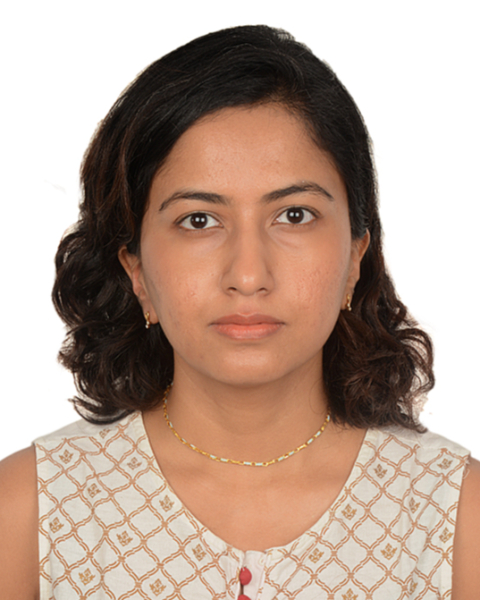PQA 08 - PQA 08 Genitourinary Cancer, Patient Safety, and Nursing/Supportive Care Poster Q&A
3173 - Factors Associated with Successful CT Simulation in Prostate Cancer Radiotherapy
Tuesday, October 1, 2024
2:30 PM - 3:45 PM ET
Location: Hall C
Screen: 9

Karishma George, MD, MBBS, DNB
Tom Baker Cancer Centre / University of Calgary
CALGARY, AB
Presenter(s)
K. George1, D. Yannitsos2, A. Natarajan1, J. S. Wu3, and L. Barbera1; 1Division of Radiation Oncology, University of Calgary, Tom Baker Cancer Centre, Calgary, AB, Canada, 2Department of Oncology, University of Calgary, Calgary, AB, Canada, 3University of Calgary, Calgary, AB, Canada
Purpose/Objective(s): Our study aims to examine factors associated with a successful CT simulation on first attempt in a cohort of prostate cancer patients treated with radiation therapy at a tertiary cancer center. Materials/
Methods: We included adult patients with prostate cancer undergoing CT simulation for pelvic radiation and requiring bladder and bowel preparation. Convenience sampling targeting 230 consecutive, consenting patients will be recruited over 6-8 months, to allow a multivariable logistic model with 12 pre-specified variables, assuming a 50% success rate of CT simulation. Patients answered questions regarding their preparation experience. We extracted CT simulation and scheduling information from patient charts. We also collected basic demographic data. The survey included questions regarding the type of consultation, bowel/bladder preparation instructions, previous treatments, ESAS-r-cancer questions to assess constipation and diarrhea, English as first language, and an open-text question for feedback. The AUA (American Urological Association) symptom score questionnaire was also included to assess urinary function. Successful CT simulation was defined as a CT planning scan that was successfully completed on the first attempt on/off the CT couch. A descriptive analysis was completed for all baseline variables. Multivariable logistic regression was used to evaluate factors associated with successful simulation.
Results: To date, we have accrued 221 patients. The mean age was 70 years, majority with Stage 3 disease (57%) and treated with external beam radiotherapy alone (67%). 73 (33%) patients had a successful CT simulation. Certain factors showed clinically meaningful associations with successful CT simulation, including in-person consult (vs virtual) [OR 1.4 (95% 0.6-3.4)], as was providing both verbal and paper instructions (vs none) [OR 1.7 (95% CI 0.65-4.5)].
Conclusion: We found a lower-than-expected rate of successful CT simulations. However, these results provide a better understanding of factors that may impact successful CT simulation in patients with prostate cancer. One might infer that in-person visits and providing both paper and verbal instructions improved the success rate. To improve successful CT simulation on the first attempt and reduce the need for repeated appointments, further enhancements in provider-patient interaction and bladder/bowel prep instructions are needed. This study will hopefully help guide strategies to improve efficiency, communication, and patient experience.
Purpose/Objective(s): Our study aims to examine factors associated with a successful CT simulation on first attempt in a cohort of prostate cancer patients treated with radiation therapy at a tertiary cancer center. Materials/
Methods: We included adult patients with prostate cancer undergoing CT simulation for pelvic radiation and requiring bladder and bowel preparation. Convenience sampling targeting 230 consecutive, consenting patients will be recruited over 6-8 months, to allow a multivariable logistic model with 12 pre-specified variables, assuming a 50% success rate of CT simulation. Patients answered questions regarding their preparation experience. We extracted CT simulation and scheduling information from patient charts. We also collected basic demographic data. The survey included questions regarding the type of consultation, bowel/bladder preparation instructions, previous treatments, ESAS-r-cancer questions to assess constipation and diarrhea, English as first language, and an open-text question for feedback. The AUA (American Urological Association) symptom score questionnaire was also included to assess urinary function. Successful CT simulation was defined as a CT planning scan that was successfully completed on the first attempt on/off the CT couch. A descriptive analysis was completed for all baseline variables. Multivariable logistic regression was used to evaluate factors associated with successful simulation.
Results: To date, we have accrued 221 patients. The mean age was 70 years, majority with Stage 3 disease (57%) and treated with external beam radiotherapy alone (67%). 73 (33%) patients had a successful CT simulation. Certain factors showed clinically meaningful associations with successful CT simulation, including in-person consult (vs virtual) [OR 1.4 (95% 0.6-3.4)], as was providing both verbal and paper instructions (vs none) [OR 1.7 (95% CI 0.65-4.5)].
Conclusion: We found a lower-than-expected rate of successful CT simulations. However, these results provide a better understanding of factors that may impact successful CT simulation in patients with prostate cancer. One might infer that in-person visits and providing both paper and verbal instructions improved the success rate. To improve successful CT simulation on the first attempt and reduce the need for repeated appointments, further enhancements in provider-patient interaction and bladder/bowel prep instructions are needed. This study will hopefully help guide strategies to improve efficiency, communication, and patient experience.
